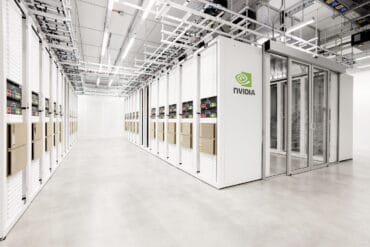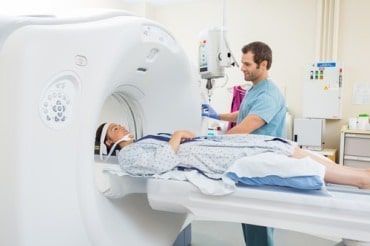
A real-time video and call-center service from Paras and Associates and Cisco reportedly increased patient satisfaction while reducing healthcare costs.
Name of Organization: Healthcare Interpretation Network
Industry: Healthcare
Location: Richland, WA USA
Business Opportunity or Challenge:
In California, as in many parts of North America, 40 percent of residents speak a language other than English. Language barriers can affect life-and-death decisions, a patient’s treatment course, and a patient’s understanding of disease. A provider also may have difficulty communicating a diagnosis to a non-English-speaking patient.
Many healthcare facilities, particularly in diverse communities such as California, have medical interpreters on staff who help patients can understand instructions, and help avoid mistakes such as taking the wrong prescription doses or not following proper home treatment. However, it’s difficult to maintain interpreters on premises 24×7, and their services are not available to smaller or remote facilities. In addition, skilled interpreters are difficult to find and recruit, especially for the range of languages spoken in many communities.
The need for healthcare organizations was to develop a high-quality, highly reliable, always-available system of interpretive services for hospitals covering languages most frequently spoken outside of English.
How This Business Opportunity or Challenge Was Met:
The Healthcare Interpretation Network (HCIN) provides medical interpreters on demand in any required language. “It’s a virtual distributed video-and-voice call center. We may have two interpreters sitting in one hospital, one sitting in another hospital, and 10 in another hospital,” Melinda Paras, president of Paras and Associates, stated in a recent report published in Forbes Insights. Paras and Associates built and maintains the Cisco technology that supports HCIN.
The HCIN is a system of shared remote interpreter services operated by northern California public hospitals. Using a VVoIP call center to create access to trained interpreter services, participating providers use medical interpreters at their own hospitals or at colleague hospitals through videoconferencing and other telecommunications technologies.
Paras and Associates implemented videoconferencing capabilities across 45 healthcare facilities. “The geography doesn’t matter—all those interpreters, in all those languages, are available to the end user,” Paras says. The system was first established in California, and is now connecting hospital-based interpreters with clinicians across the country.
The real-time hospital translation service is an integrated solution of voice, video, and data communications offered over public and private networks. The solution incorporates Cisco Unified Contact Center, Cisco Unified Communications, and partner technologies to provide voice, video, application, and call center services.
“The calls come in from every imaginable device,” Paras says. “But the interpreters have to be on a video phone, in order to take both video calls and telephone calls.” Real-time video connectivity is essential, versus voice-only communication, Paras explains. “First of all, you can’t do American Sign Language by voice. Second, for spoken language interpreters, voice-only communications has a lot of limitations. A doctor will say to the patient, ‘Here are my instructions or discharge from the hospital. Take these pills, clean this dressing. Do you understand?’ A lot of patients, especially from immigrant communities, as an act of respect, will say yes or nod their heads. That doesn’t indicate in any way that they understood what they’re supposed to be doing.”
Measurable/Quantifiable and “Soft” Benefits:
As a result of the real-time video interpretation service, patient satisfaction and quality of care have greatly improved, as has medical staff productivity. The system has also delivered cost savings to hospitals with reduced cost-per-minute charges for language interpreters. Using the HCIN, 300 to 400 hospital staff members at participating hospitals now have access to language interpreter services. The network currently routes approximately 3,500 videoconference and phone calls per month, and interpreters within the participating hospitals respond to 1,500 of these calls in Cambodian, Hindi, Hmong, Spanish, Mandarin, and Tongan.
The HCIN has also improved medical staff productivity and boosted the capacity of the interpreter program at all participating hospitals. Another benefit is more effective communications that in turn delivers cost savings to hospitals due to the reduced cost-per-minute charges for language interpreters compared to traditional commercial services. Additional services the HCIN offers include the ability to designate high priority for a call, so that an emergency call can jump to the top of the queue. All requests for interpretive language services on the HCIN are answered in less than three minutes, with an average connection time of 22 seconds.
Before HCIN, 49 percent of patients reported in surveys that they were unable to receive interpretive services when needed and 42 percent of hospital staff said that difficulties getting an interpreter posed a serious problem in the provision of care. And 79 percent of physicians said patients lacked an understanding of medications, preventive care, and self-care instructions due to a language barrier. Since implementation, fewer than 20 percent of providers reported that they perceive confusion over procedures as the result of a language barrier.
(Sources: Forbes Insights, Cisco, Paras and Associates)
Want more? Check out our most-read content:
White Paper: How to ‘Future-Proof’ a Streaming Analytics Platform
Research from Gartner: Real-Time Analytics with the Internet of Things
E-Book: How to Move to a Fast Data Architecture
The Value of Bringing Analytics to the Edge
Three Types of IoT Analytics: Approaches and Use Cases
How AmEx Found Gold With Machine Learning
What’s Behind the Attraction to Apache Spark
Liked this article? Share it with your colleagues!





























